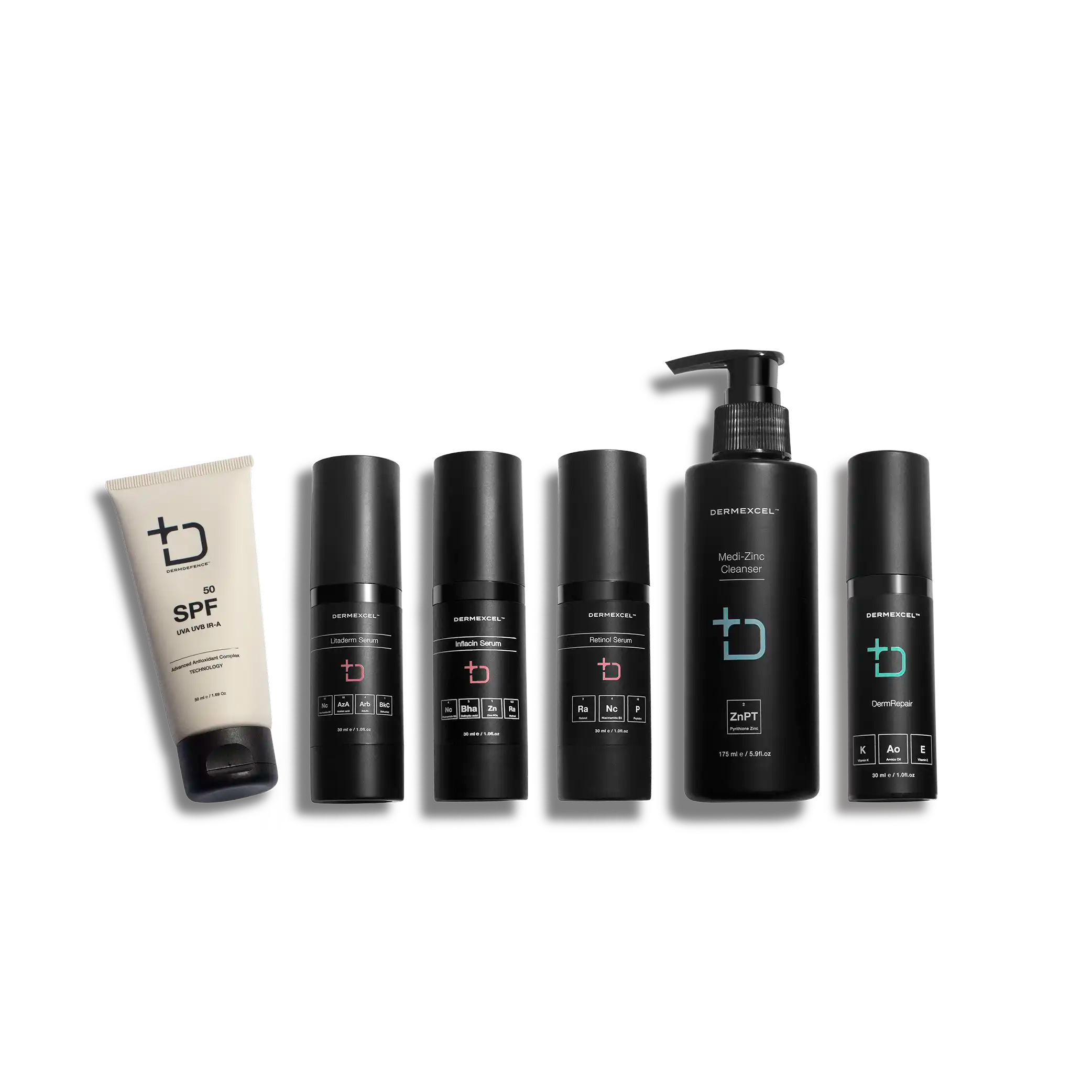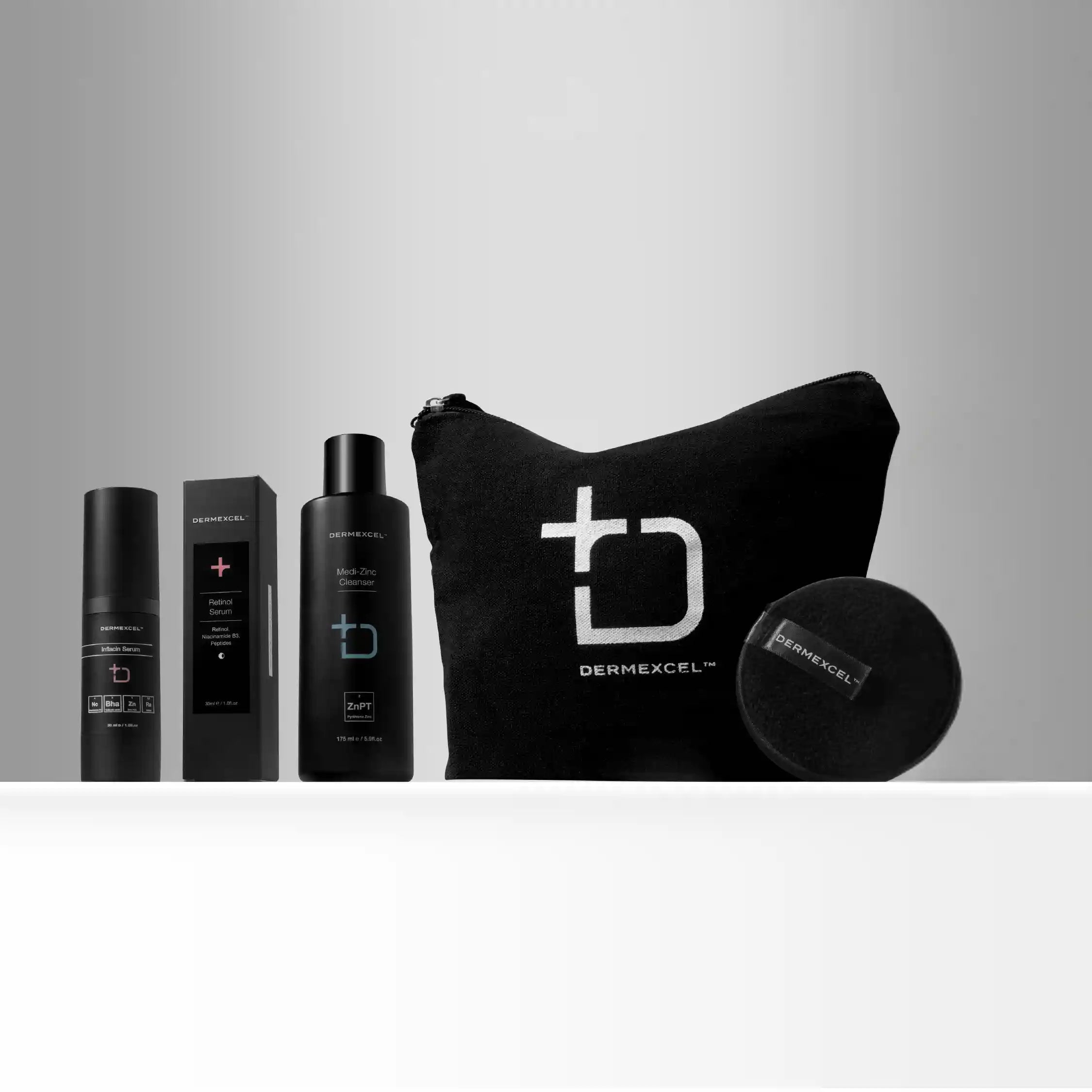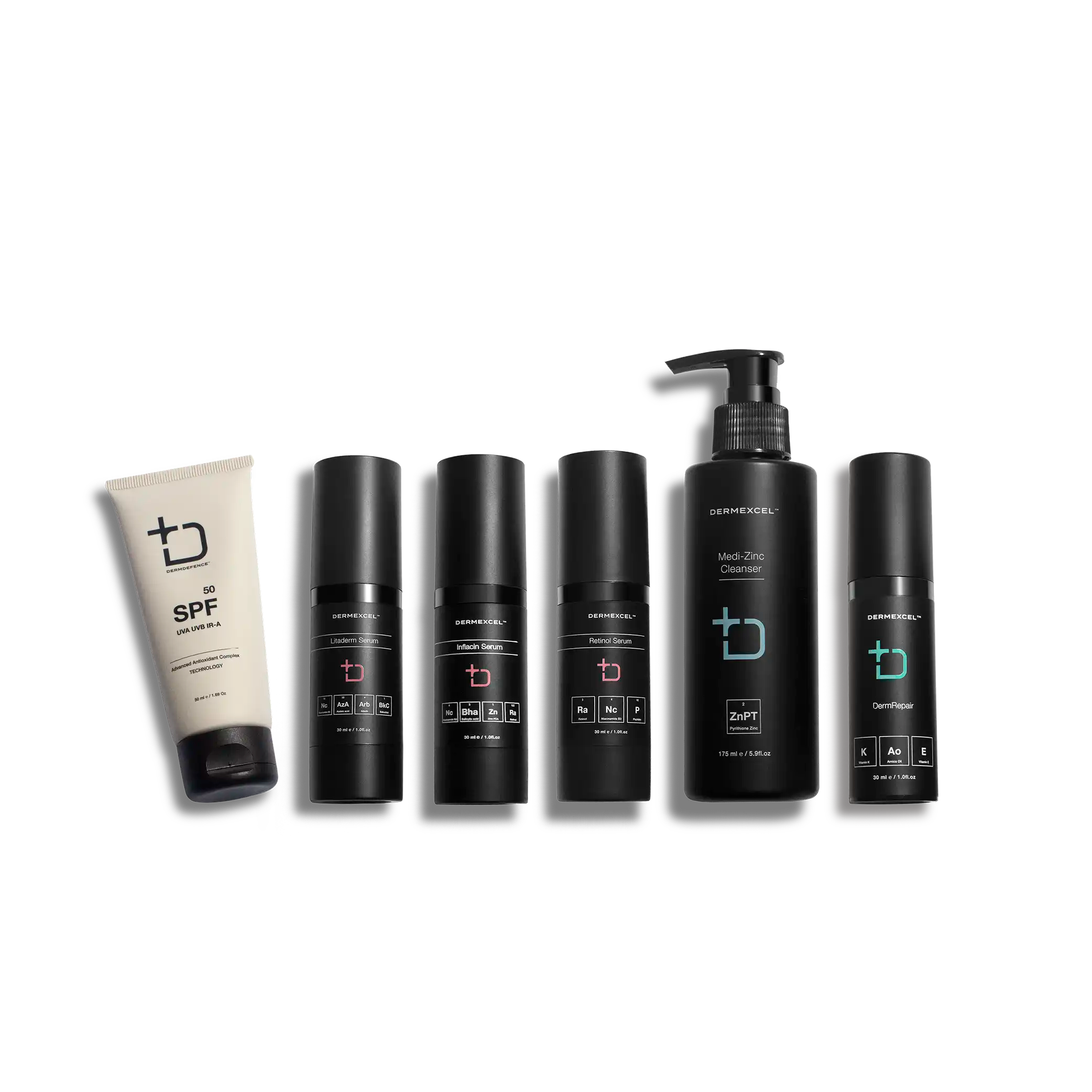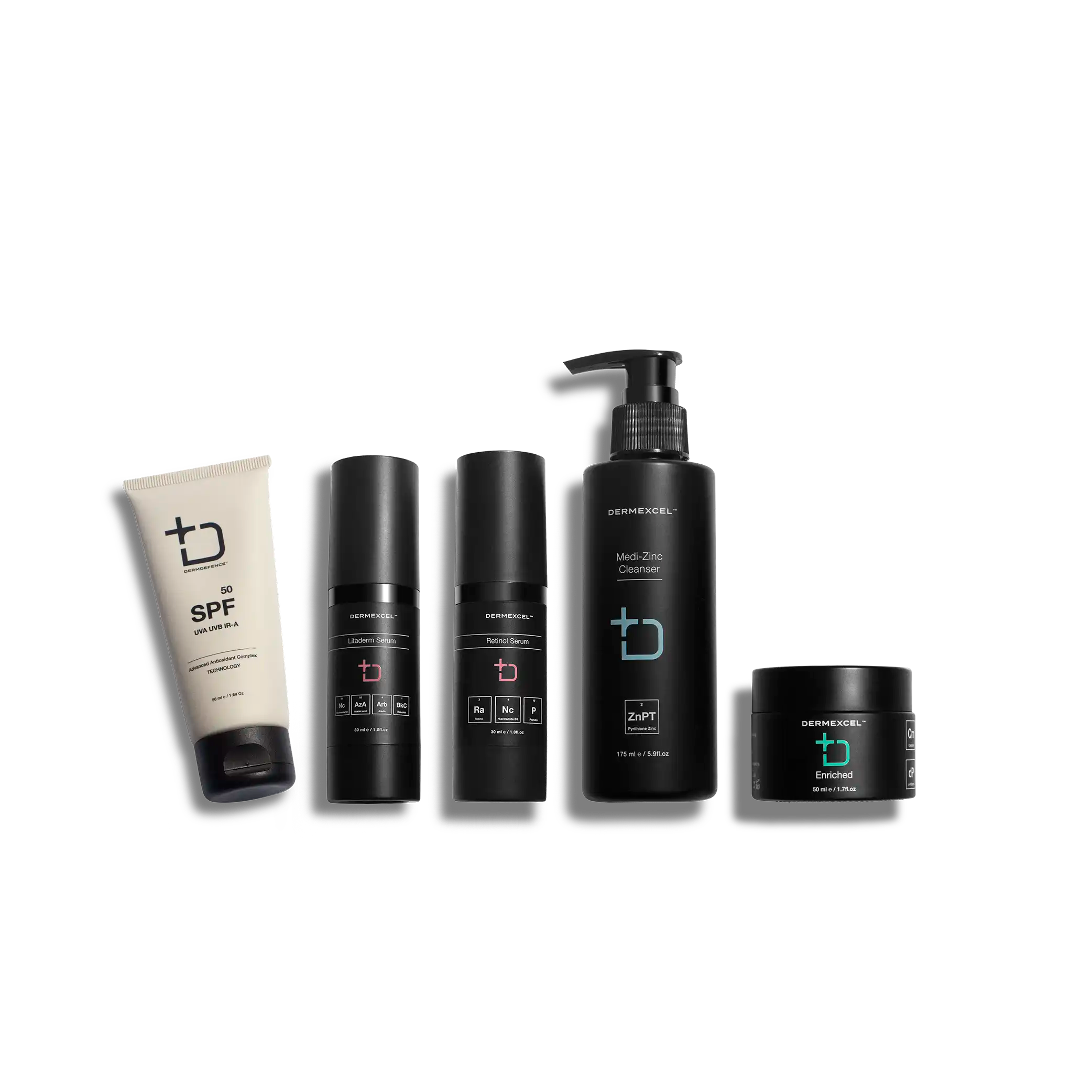Treating Different Types of Rosacea
The four main Rosacea Subtypes:
The four types of rosacea can be categorized into two basic complexion types:
The Best Skin Health Treatment plan for Rosacea
Active Ingredients Treating Rosacea
Lifestyle Changes to Manage Rosacea
Rosacea Triggers
DERMAL DIAGNOSIS
DIAGNOSE YOUR SKIN TYPE
Assessment
Treatment Plan
Confident Skin
DermExcel Rosacea Treatment










